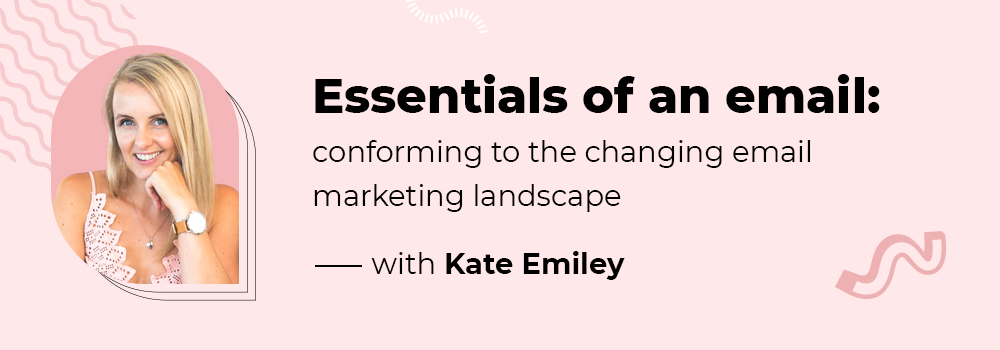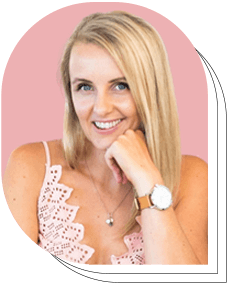Expert Interview Series: Part 9
Copy is one of the most critical aspects of email marketing. The tone and words you choose have a profound influence on how the readers perceive your message. It will also affect the conversions you get. Besides, it is also important to follow certain best practices so that your email gets noticed and brings results. Whether it is an automated email or newsletter, you must think of something unique to serve your customers.
So, we got in touch with Kate Emiley, an email and content marketing consultant to understand how to create emails that will help marketers have an edge over their competitors.
We gathered some great insights from her and here’s sharing them with you all.
Read on…



Inboxes are getting pretty competitive. How do you make your emails stand out?
Kate : Personalization. That’s one of the biggest advantages of email marketing vs other forms of digital marketing (like social media), you’re able to send relevant content to an individual subscriber. This means you can send a specific sequence or content recommendations based on your subscriber’s interests or where they’re at in the buyer journey
with you.


What will your advice be when it comes to building email lists?
Kate : A lead magnet is still the number one way to build your email list organically (aka for free!) But it’s up to businesses to get creative with this one because we’ve all downloaded a million e-books and guides that get forgotten about in our ever-growing downloads folder. A lead magnet could be a live masterclass or a challenge or even a trial of your product/course. The key is to give a valuable piece of content away for free that gives your subscriber a quick win. If you’re an eCommerce business though, keep things simple and offer a discount code or free shipping.



How important is the email copy when it comes to the success of an email campaign?
Kate : While email copy is important, content quality and consistency are most important. Rather than going back and forth over the copy for an email newsletter for weeks to make it “perfect”, it’s better to create consistent content on a weekly or fortnightly basis. It’s important to understand where your subscriber is at when they receive your email because your email will act as an interruption in their day (generally it’s not something they are seeking out). So it’s important to write copy with that frame in mind and make it easy to digest and skim.


Almost all brands send welcome emails these days. What kind of copy will help you get maximum click-throughs?
Kate : Use your welcome email as an opportunity to segment your list. Give your new subscriber the chance to self-select what they’re interested in hearing more of from you. This may mean you ask them where they are at experience-wise or another significant filter dependent on your business. For example, if you’re a business coach, you may ask whether your new subscriber is new to business or has been in business for 5+ years. The content you share with a beginner will be vastly different than someone that’s experienced. This level of relevancy will mean you get more opens and click-throughs in your welcome email and all future emails.


Do you follow any copywriting formula to get your emails read and acted on?
Kate : I don’t focus on any formula but instead, some best practices boost engagement.
- Add a hook or intro to the start to bring in a human element (relatable stories are great here!)
- Use headers to help group pieces of content within your email
- Dot points are a great way to break down your content into bite-sized chunks
- Highlighted points (bold or colored) draw the reader’s attention to the most important information
- Gifs or memes add personality and humor without overdoing it with images



How to maintain the human touch in automation emails like cart abandonment emails and re-engagement emails such that they don’t look boring and bot-driven?
Kate : Spend some time working on your brand tone of voice. Write these emails in a way that represents your tone so that it’s consistent across your website, social media, and sales emails like cart abandonment. Integrate phrases or words that reflect who your brand is and sound like they’re coming from you.



I had read somewhere that newsletters are getting obsolete. What’s your take on this statement? Can we break the stereotype that newsletters are boring?
Kate : Don’t send boring newsletters, simple. As I’ve shared above, if you spend the time segmenting your list and sending hyper-relevant content to where your subscribers are at right now, then they’re going to be more likely to look out for your content in their inbox. If you can do that, it’ll truly be your superpower.


Promoting a lead magnet through emails can get tricky. Can you suggest any tips to create an effective promotion strategy?
Kate : Think of your lead magnet as your one focus, so put it everywhere. Put it in your Instagram bio, as a pop-up on your website, and in your email signature. I also recommend you create long-form content (blog, youtube, podcast) that links to this lead magnet and promote this again and again through channels where you have an audience (like social media).


Nurture emails are like the gateway to conversions. How to make sure they work?
Kate : Think about who your ideal client is and where they’re at in their journey with you. Ensure you deliver relevant value that positions you as the expert and gives them a quick win to keep them coming back for more. Also sharing testimonials that are hyper-relevant to them is a great strategy.



What are some email copywriting mistakes that you often come across? And how to correct/ avoid them?
Kate : Inconsistency is the biggest one I think. Business owners often tell me they haven’t sent an email for a few months (even though they know they should). Developing some sort of schedule that includes weekly or fortnightly newsletters (or at the very least a solid nurture sequence) will be key to building rapport and building trust with your subscribers. I also see businesses send emails only when they have something to sell, which for e-commerce businesses works okay, however, for service-based businesses, this is a big no-no. I’ve also seen business owners focus heavily on design and images, which is a great strategy for e-commerce but it’s not for service businesses because you need to dive deeper into your storytelling and positioning yourself as an expert.



Last but not the least, is there any email copywriting checklist you follow that you’d want to share with our readers?
Kate : I have an Email Marketing Guide which shares 10 strategies to get more engagement from your emails.


Email split testing is a tricky game. Do you follow any best practices to get it right?
Kate : AB split testing is something that not all email marketing platforms offer and while it is a very cool tool, it’s not necessary for getting started with email marketing. If you do choose to AB split test emails make sure you’re only changing one variable but make it an obvious change. For example, split test an 8-word subject line vs a one-word subject line or an image-heavy email vs an entire text-based one. Often people will test a different color of the button and while this is okay, it may not have made any difference it’s just one of the more engaged sample sets.



Subject lines and preheader texts may come as an afterthought. Can you share some ideas to ace these elements?
Kate : Subject lines should always be a first thought because if they don’t intrigue your subscriber to open the email, your email is wasted anyway. Your subject line needs to spark curiosity and some of my favorite ways to do that are questions, lists, testimonials, and being niche specific. Your preview text should support your subject line and provide a little added detail.



CTA is arguably the most essential element of an email. Can you share some pro tips to help our readers hit the bull’s eye?
Kate : Do not overstuff your emails with multiple CTAs. For your email to have the best click-through rate, only have one CTA which could be in the form of a button and/or linked text. I love adding a CTA as a PS after my name because it feels like a softer sell than a big bold button in the middle of the email.
Now that was quite an insightful read, right? Stay tuned for our next interview in the coming quarter. We’ll be back with some more interesting tips and tricks related to email or CRM.
Till then, happy emailing!







Kevin George
Latest posts by Kevin George (see all)
Comprehensive Guide to Data Views in Salesforce Marketing Cloud
A Comprehensive Guide To Creating HubSpot Landing Pages